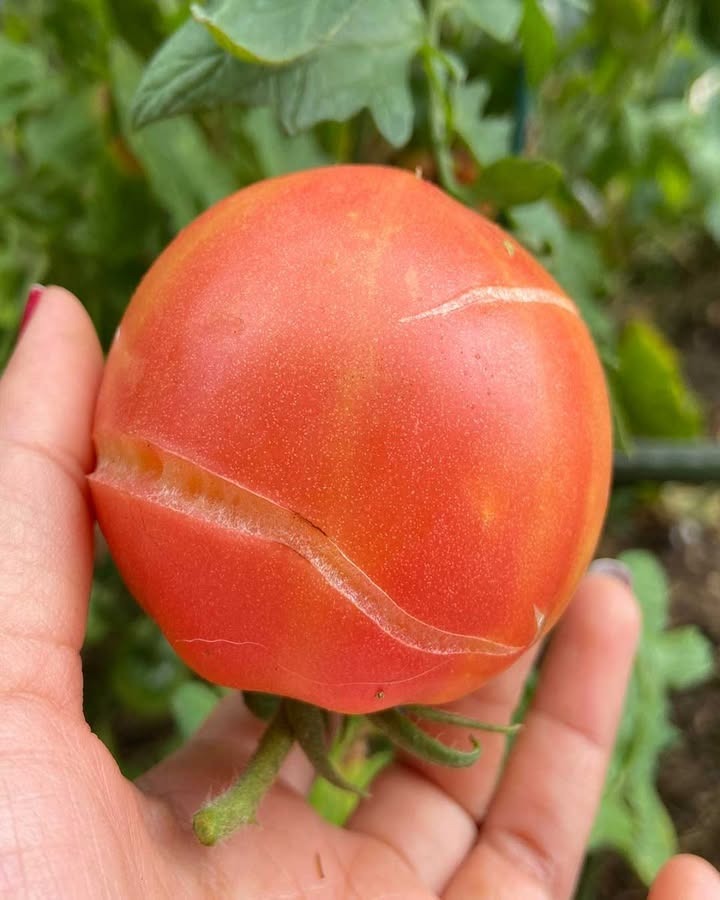ADVERTISEMENT
Certainly! Here’s an informative and helpful article for “Why Your Tomatoes Are Splitting & What You Can Do” — perfect for gardening blogs, newsletters, or beginner guides:
ADVERTISEMENT
Why Your Tomatoes Are Splitting & What You Can Do About It
The Real Reason Behind Cracked Tomatoes — And How to Prevent It
You’ve spent weeks watching your tomato plants grow — watering them, staking them, and waiting patiently for that perfect red fruit. Then, just as your tomatoes ripen… you notice ugly cracks and splits running down the sides. Sound familiar?
Tomato splitting is a common frustration for home gardeners, but the good news is: it’s not a lost cause. Cracking doesn’t necessarily mean your tomatoes are ruined, and with a few small changes, you can reduce or even prevent it entirely.
🍅 Why Do Tomatoes Split?
Tomatoes split when their insides grow faster than their skins can stretch. This is most often caused by a sudden change in water levels — especially after heavy rain or overwatering following a dry period.
There are two common types of cracking:
- Radial cracking: splits run from the stem downward like rays — often more severe.
- Concentric cracking: circular splits around the stem — usually more superficial.
Both types are signs that your plant absorbed water too quickly, causing internal pressure that the skin couldn’t handle.
💧 The #1 Cause: Inconsistent Watering
Tomatoes are especially sensitive to fluctuations in moisture. After a dry spell, plants become stressed. When a sudden rain or big watering happens, the fruit soaks up the water quickly, swelling on the inside and causing the skin to rupture.
✅ How to Prevent Tomato Splitting
Here are practical tips to protect your precious crop:
1. Water Consistently
- Water deeply and regularly — about 1–2 inches per week.
- Don’t let your soil dry out completely between waterings.
- Use soaker hoses or drip irrigation to maintain even moisture.
2. Mulch Around the Base
- Apply a 2–3 inch layer of mulch (straw, compost, or shredded leaves) to help retain soil moisture and reduce evaporation.
- Mulch also helps regulate soil temperature — another factor in fruit stress.
3. Harvest Early and Often
- Pick tomatoes as soon as they show full color but are still slightly firm. They’ll finish ripening indoors without splitting.
- Overripe tomatoes are more prone to cracking, especially after rain.
-
ADVERTISEMENT
